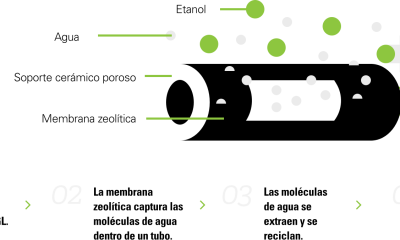Health
Unveiling the Marvels of Cyanová: A Deep Dive into the Blue Essence of Nature
Published
3 months agoon
By
robert log
Definition and origin
Introduction to Cyanová
Cyanová, often referred to as “blue-green algae,” is a fascinating organism that holds a significant place in both natural ecosystems and human activities. Originating from ancient times, has captured the attention of scientists, environmentalists, and health enthusiasts alike.

Historical Significance
Early civilizations recognized the potential of , utilizing it for various purposes ranging from food to medicine. However, it wasn’t until recent centuries that its true value started to emerge through scientific exploration and research.
Composition of Cyanová
boasts a unique chemical composition, rich in essential nutrients such as proteins, vitamins, and minerals. Its molecular structure contributes to its vibrant blue hue and potent biological properties.
Health Benefits
Studies have shown that possesses remarkable antioxidant properties, aiding in detoxification and cellular regeneration. Additionally, it supports immune system function, promoting overall health and well-being.
Environmental Impact
In natural ecosystems, plays a crucial role in oxygen production and carbon sequestration. Its presence sustains aquatic life and helps maintain ecological balance, making it indispensable for biodiversity.
Cyanová in Agriculture
As a biofertilizer, enhances soil fertility and improves crop yield. Its ability to fix atmospheric nitrogen reduces the need for synthetic fertilizers, offering a sustainable solution for agricultural practices.
Biotechnological Applications
versatility extends to various industries, including pharmaceuticals and biotechnology. Its bioactive compounds hold promise for developing novel drugs and bioproducts with therapeutic applications.

Cyanová as a Sustainable Resource
With growing concerns over environmental sustainability, emerges as a renewable energy source and a potential tool for bioremediation. Harnessing its capabilities could lead to innovative solutions for mitigating pollution and resource depletion.
Cultural Significance
Throughout history, has held symbolic importance in cultural traditions and artistic expressions. Its mesmerizing blue color has inspired artists, poets, and storytellers, becoming a motif for creativity and imagination.
Challenges and Controversies
Despite its benefits, faces challenges such as pollution and overexploitation. Concerns regarding its commercial use raise ethical questions about conservation and responsible management.
Future Prospects
The future of holds immense potential for innovation and sustainability. Continued research and development efforts aim to unlock its full capabilities for the benefit of humanity and the environment.
Consumer Awareness and Market Trends
As consumer awareness grows regarding health and environmental issues, the demand for -based products is on the rise. Market trends indicate a shift towards natural and sustainable alternatives, driving growth in the industry.
Regulatory Framework
To ensure responsible stewardship of resources, regulatory frameworks are being developed to govern its harvesting, production, and distribution. International cooperation is essential in establishing standards for ethical and sustainable practices.
Case Studies
Success stories from around the world showcase the diverse applications of in agriculture, biotechnology, and environmental conservation. These case studies highlight both the benefits and challenges associated with utilization.
Research and Development Initiatives
Numerous research and development initiatives are underway to further unlock potential. Scientists are delving into its genetic makeup, exploring ways to enhance its nutritional profile and bioactive compounds for therapeutic applications.
Prospects for Sustainable Utilization
As global awareness of environmental sustainability grows, there is increasing emphasis on harnessing in ways that are both economically viable and ecologically sound. Sustainable harvesting practices and cultivation techniques are being developed to ensure the long-term viability of resources.
Innovation in Cyanová Products
Innovation in products continues to drive market growth and consumer interest. From functional foods to skincare formulations, companies are leveraging unique properties to create products that cater to diverse consumer needs.
Educational Outreach and Awareness Campaigns
Educational outreach and awareness campaigns play a crucial role in promoting understanding and appreciation for . Schools, universities, and environmental organizations are actively involved in educating the public about significance and the importance of conservation efforts.

Community Engagement and Participation
Engaging local communities in conservation and utilization efforts is essential for long-term sustainability. By involving communities in decision-making processes and empowering them with knowledge and resources, we can foster a sense of ownership and stewardship over resources.
Collaborative Partnerships and Knowledge Sharing
Collaborative partnerships between governments, industries, academia, and civil society are key to maximizing the benefits of while minimizing its environmental impact. By sharing expertise, resources, and best practices, we can collectively address the challenges and opportunities associated with utilization.
Exploring Cyanová’s Potential in Renewable Energy
holds promise as a sustainable source of renewable energy. Through photosynthesis, can convert sunlight into chemical energy, making it a potential candidate for biofuel production. Research in this area focuses on optimizing cultivation techniques and lipid extraction methods to maximize biofuel yields while minimizing environmental impact.
Addressing Pollution Through Cyanová Bioremediation
One of the most intriguing applications of is in bioremediation, the process of using living organisms to clean up pollution. ability to absorb heavy metals, toxins, and excess nutrients from water makes it an effective tool for restoring contaminated ecosystems. Ongoing research explores ways to harness natural affinity for pollutants to mitigate environmental damage caused by industrial activities and agricultural runoff.
Cyanová as a Source of Sustainable Nutrition
In addition to its environmental applications, serves as a valuable source of sustainable nutrition. Rich in proteins, essential fatty acids, vitamins, and minerals, -based foods offer a nutrient-dense alternative to traditional protein sources like meat and dairy. As the global population grows and demands for food security increase, presents an opportunity to address nutritional deficiencies while reducing the environmental footprint of food production.
Promoting Ethical Sourcing and Fair Trade Practices
As interest in grows, it is essential to prioritize ethical sourcing and fair trade practices to ensure the well-being of communities and ecosystems involved in its production. By supporting transparent supply chains and empowering local stakeholders, we can create a more equitable and sustainable Canová industry that benefits both producers and consumers.
Empowering Communities Through Cyanová Entrepreneurship
entrepreneurship initiatives empower communities to harness the economic potential of while preserving local ecosystems. By providing training, resources, and market access, these initiatives enable communities to establish sustainable businesses centered around cultivation, processing, and product development. In doing so, they create opportunities for economic growth, job creation, and community development.
Harnessing Cyanová for Climate Change Mitigation
Climate change presents one of the greatest challenges of our time, and offers innovative solutions for mitigation and adaptation. By sequestering carbon dioxide through photosynthesis, plays a vital role in reducing greenhouse gas emissions and combating climate change. Research efforts focus on optimizing cultivation techniques and exploring carbon capture and utilization technologies to maximize its potential as a carbon sink.
Cyanová’s Role in Biodiversity Conservation
As key players in aquatic ecosystems, contributes to biodiversity conservation by providing food and habitat for a diverse range of organisms. Preserving habitats is essential for maintaining ecosystem health and supporting the countless species that depend on them for survival. Conservation efforts aim to protect -rich environments from threats such as pollution, habitat destruction, and climate change-induced disturbances.
Cyanová’s Journey Towards Commercialization
The journey from laboratory discovery to commercialization is a complex and challenging process that requires collaboration between scientists, entrepreneurs, investors, and policymakers. From scaling up production to navigating regulatory requirements, bringing -based products to market requires careful planning, research, and investment. Despite the hurdles, the potential economic, environmental, and societal benefits make it a journey worth pursuing.
The Role of Innovation and Entrepreneurship in Cyanová Development
Innovation and entrepreneurship play a crucial role in driving development and creating new opportunities for growth and impact. Startups and research institutions are pioneering new technologies and business models that harness unique properties for applications ranging from biomedicine to sustainable agriculture. By fostering a culture of innovation and supporting entrepreneurial ventures, we can accelerate the pace of discovery and commercialization.
Collaborative Approaches to Cyanová Research and Development
Collaboration is key to unlocking full potential and addressing the complex challenges associated with its utilization. By bringing together multidisciplinary teams from academia, industry, government, and civil society, we can leverage diverse expertise and resources to tackle issues such as environmental sustainability, food security, and public health. Through open collaboration and knowledge sharing, we can maximize the impact of research and development efforts on a global scale.
Addressing Knowledge Gaps Through Continued Research
Despite the significant progress made in understanding , there are still many unanswered questions and knowledge gaps that warrant further investigation. Ongoing research efforts focus on areas such as ecology, genetics, physiology, and biotechnology, aiming to deepen our understanding of this remarkable organism and unlock its full potential.
Education and Training in Cyanová Science
Education and training play a crucial role in advancing science and preparing the next generation of researchers, innovators, and entrepreneurs. Universities and educational institutions offer specialized courses and programs in biology, biotechnology, and environmental science, providing students with the knowledge and skills needed to contribute to this burgeoning field.
Public Engagement and Advocacy for Cyanová Conservation
Public engagement and advocacy are essential for raising awareness about the importance of conservation and promoting sustainable practices. Environmental organizations, citizen scientists, and concerned individuals play a vital role in advocating for policies and initiatives that protect habitats and promote responsible stewardship of resources.
International Collaboration and Knowledge Exchange
In an increasingly interconnected world, international collaboration and knowledge exchange are critical for advancing research, development, and conservation efforts. Networks such as the Global Network facilitate collaboration between scientists, policymakers, and stakeholders from around the world, enabling the sharing of expertise, resources, and best practices.
The Role of Citizen Science in Cyanová Research
Citizen science initiatives empower ordinary people to contribute to research and conservation efforts through data collection, monitoring, and outreach activities. By engaging citizen scientists in projects such as monitoring programs, researchers can gather valuable data on distribution, abundance, and ecological trends, helping to inform conservation strategies and management decisions.
Conclusion
In conclusion, Cyanová stands as a testament to the marvels of nature, offering a plethora of benefits to society and the environment. As we delve deeper into its mysteries, let us embrace the responsibility to conserve and harness its potential for a brighter, bluer future.

FAQs
- Are there any regulations governing Cyanová cultivation and harvesting?
- Yes, regulations vary by region, but many countries have guidelines in place to regulate cultivation and harvesting practices to ensure sustainability and environmental protection.
- What are some common misconceptions about Cyanová?
- One common misconception is that all species are toxic, which is not true. While some species may produce toxins under certain conditions, many strains are safe and beneficial.
- Can Cyanová be used in wastewater treatment?
- Yes, has shown promise in wastewater treatment due to its ability to absorb nutrients and pollutants, helping to improve water quality.
- Is Cyanová cultivation environmentally friendly?
- Yes, cultivation is generally considered environmentally friendly, especially compared to traditional agricultural practices that rely heavily on synthetic fertilizers and pesticides.
- What are some ongoing research areas related to Cyanová?
- Ongoing research areas include exploring new applications for in fields such as bioremediation, renewable energy, and sustainable agriculture.
What are some potential risks associated with Cyanová cultivation and usage?
- Some potential risks include contamination from toxins or pollutants, ecological disturbances from invasive species, and challenges related to scaling up production sustainably.
How does Cyanová compare to other algae species in terms of nutritional value?is unique in its nutritional profile, often containing higher levels of protein, essential fatty acids, and certain vitamins and minerals compared to other algae species.
Are there any cultural traditions or rituals associated with Cyanová?Yes, in some cultures, holds spiritual significance and is used in rituals or ceremonies as a symbol of life, renewal, and connection to nature.
What are some potential future applications of Cyanová that are currently being explored?Future applications of Cyanová include using it as a source of sustainable dyes, textiles, and biomaterials, as well as exploring its potential in space agriculture and extraterrestrial colonization.
How can individuals contribute to the sustainable utilization of Cyanová?Individuals can support sustainable Cyanová initiatives by choosing products from reputable sources, advocating for environmental conservation, and reducing their own environmental footprint through conscious consumption and lifestyle choices.
- What are some challenges associated with Cyanová cultivation in industrial settings?
- Challenges may include maintaining optimal growth conditions, preventing contamination, and ensuring scalability and cost-effectiveness.
- How can governments support research and development initiatives?
- Governments can provide funding, infrastructure, and regulatory support to facilitate research and development, as well as promote collaboration between academia, industry, and other stakeholders.
- What are some potential ethical considerations in biotechnology?
- Ethical considerations may include issues related to genetic modification, intellectual property rights, and equitable access to benefits derived from research and development.
- Are there any cultural taboos or restrictions associated with in certain societies?
- While is generally regarded as beneficial and safe, cultural attitudes towards its consumption or usage may vary among different societies and communities.
- Where can I learn more about ongoing research and development efforts?
- Universities, research institutions, and industry conferences are excellent sources of information on current Cyanová research and development initiatives.
- Where can I find resources for learning more about Cyanová and getting involved in Cyanová-related activities? – Websites of environmental organizations, research institutions, and government agencies often provide information and resources on Cyanová, as well as opportunities for involvement in research, conservation, and outreach activities. Additionally, scientific journals, conferences, and online forums are valuable sources of information and networking opportunities for individuals interested in Cyanová.
- How can businesses and industries contribute to Cyanová conservation and sustainability? – Businesses and industries can support Cyanová conservation and sustainability by adopting environmentally friendly practices, investing in research and development of Cyanová-based products and technologies, and engaging in partnerships with conservation organizations and local communities to promote responsible resource management.
- What are some potential economic benefits of investing in Cyanová research and development? – Investing in Cyanová research and development can lead to economic benefits such as job creation, innovation, and market growth in sectors such as biotechnology, agriculture, and renewable energy. Cyanová-based products and technologies also have the potential to generate revenue and contribute to economic growth and diversification.
- How can individuals contribute to Cyanová research and conservation efforts on a local level? – Individuals can contribute to Cyanová research and conservation efforts on a local level by participating in citizen science projects, volunteering with environmental organizations, advocating for policies that protect Cyanová habitats, and promoting sustainable practices in their communities.
- What are some potential future scenarios for Cyanová in the face of climate change and environmental degradation? – In the face of climate change and environmental degradation, Cyanová faces both challenges and opportunities. While Cyanová populations may be affected by changes in temperature, precipitation, and water quality, they also have the potential to adapt and contribute to ecosystem resilience. Research and conservation efforts focused on understanding Cyanová’s response to environmental change and promoting its conservation and sustainable use will be crucial for ensuring its continued survival and ecological significance.
- Where can I find resources for learning more about Cyanová and getting involved in Cyanová-related activities? – Websites of environmental organizations, research institutions, and government agencies often provide information and resources on Cyanová, as well as opportunities for involvement in research, conservation, and outreach activities. Additionally, scientific journals, conferences, and online forums are valuable sources of information and networking opportunities for individuals interested in Cyanová.
- How can businesses and industries contribute to Cyanová conservation and sustainability? – Businesses and industries can support Cyanová conservation and sustainability by adopting environmentally friendly practices, investing in research and development of Cyanová-based products and technologies, and engaging in partnerships with conservation organizations and local communities to promote responsible resource management.
- What are some potential economic benefits of investing in Cyanová research and development? – Investing in Cyanová research and development can lead to economic benefits such as job creation, innovation, and market growth in sectors such as biotechnology, agriculture, and renewable energy. Cyanová-based products and technologies also have the potential to generate revenue and contribute to economic growth and diversification.
- How can individuals contribute to Cyanová research and conservation efforts on a local level? – Individuals can contribute to Cyanová research and conservation efforts on a local level by participating in citizen science projects, volunteering with environmental organizations, advocating for policies that protect Cyanová habitats, and promoting sustainable practices in their communities.
- What are some potential future scenarios for Cyanová in the face of climate change and environmental degradation? – In the face of climate change and environmental degradation, Cyanová faces both challenges and opportunities. While Cyanová populations may be affected by changes in temperature, precipitation, and water quality, they also have the potential to adapt and contribute to ecosystem resilience. Research and conservation efforts focused on understanding Cyanová’s response to environmental change and promoting its conservation and sustainable use will be crucial for ensuring its continued survival and ecological significance.
You may like
Health
Eggshell Parenting: what are egg shell parenting
Published
3 days agoon
September 5, 2024By
admin
what are egg shell parenting Parenting plays a critical role in shaping a child’s emotional, psychological, and social development. Among the various approaches to parenting, some styles are overly cautious and protective. One such style is “eggshell parenting,” where parents exhibit extreme care, protecting their children from discomfort, failure, or any form of emotional distress. The name “eggshell” symbolizes the fragility with which these parents perceive their children, treating them as what are egg shell parenting though they might crack under the slightest pressure. While well-meaning, this approach can have unintended negative consequences for children’s development. Eggshell parenting is similar to other protective styles, such as helicopter or snowplow parenting, but its focus lies more in shielding children from emotional challenges rather than pushing them toward achievement.what are egg shell parenting
The Characteristics of Eggshell Parenting
Eggshell parenting is defined by a few key behaviors that stem from the desire to protect children from any emotional discomfort or challenges. These characteristics include:
- Overprotection: Eggshell parents what are egg shell parenting are excessively protective, constantly trying to shield their children from failure, disappointment, or hardship. They may go to great lengths to prevent their children from encountering any negative experiences.
- Avoidance of Conflict: Parents who practice eggshell parenting tend to avoid any form of confrontation or emotional discomfort for their children. This includes stepping in to solve disputes between their child and peers or preventing any situation that might cause stress or anxiety.
- Excessive Involvement: These parents often take a very active role in their child’s life, including schoolwork, extracurricular activities, and social interactions. They may complete tasks for their child to ensure success or prevent failure.
- Fragility Perception: Eggshell parents view their children as emotionally fragile, believing that even minor disappointments or challenges could cause significant distress. They tend to walk on eggshells, metaphorically, around their children to avoid causing upset.
Psychological Impact on Children
Although the intentions behind what are egg shell parenting eggshell parenting are good, this style can inadvertently harm a child’s emotional and psychological development. Children need to experience challenges and adversity to develop resilience and emotional strength. However, eggshell parenting prevents them from having these essential experiences, leading to various negative outcomes.
- Lack of Emotional Resilience: One of the most significant consequences of eggshell parenting is that children may fail to develop emotional resilience. They do not learn how to handle failure, rejection, or disappointment because their parents shield them from these experiences. As a result, when they face challenges later in life, they may struggle what are egg shell parenting to cope effectively, feeling overwhelmed by situations that others may handle with ease.
- Low Self-Esteem: When parents are constantly stepping in to protect or help their child, the message conveyed is that the child is not capable of handling the situation on their own. Over time, this can lead to feelings of inadequacy and low self-esteem. Children may come to believe that they are not competent enough to face challenges without their parent’s intervention, leading to a dependency on external support.
- Fear of Failure: Failure is an important learning experience that fosters growth and problem-solving skills. In eggshell parenting, failure is seen as something to be avoided at all costs. This teaches children that failure is a catastrophic event, rather than a natural part of life. As a result, they may develop a deep fear of failure, avoiding risks and new challenges because they are afraid of making mistakes.
- Inability to Handle Stress: Children raised under eggshell parenting may also develop a heightened sensitivity to stress. Since they have been what are egg shell parenting protected from stressful situations, they may not know how to manage stress effectively when it inevitably arises. This can lead to increased anxiety and difficulty adapting to life’s normal ups and downs.
Social Consequences
Eggshell parenting can also have a profound effect on a child’s social development. Social interactions often involve conflict, negotiation, and compromise—skills that are vital for maintaining healthy relationships. However, eggshell parenting can prevent children from learning these social skills what are egg shell parenting by intervening in social conflicts or avoiding situations where the child might face discomfort.
- Poor Conflict Resolution Skills: Children who grow up with eggshell parents may struggle to resolve conflicts on their own. Since their parents often step in to handle any disputes, these children do not learn how to navigate disagreements with peers. This can lead to difficulties in maintaining friendships and building meaningful relationships in the future.
- Social Dependency: Eggshell parenting can foster a dependency on the parent in social situations. The child may rely on their parent to guide them through interactions, make decisions for them, or solve problems. As a result, they may feel unsure or anxious in social settings where they are expected to act independently.
- Difficulty Forming Healthy Relationships: The combination of low self-esteem, fear of failure, and poor conflict resolution skills can make it difficult for children of eggshell parents to form healthy, balanced relationships. what are egg shell parenting They may become overly reliant on others for emotional support or may struggle to assert themselves in relationships, leading to imbalanced dynamics.
Long-Term Implications
The effects of eggshell parenting are not limited to childhood; they can extend well into adulthood. As children grow older, they are expected to take on more responsibilities and navigate increasingly complex social and professional environments. However, children of eggshell parents may what are egg shell parenting find these transitions particularly challenging due to the overprotection they experienced during their upbringing.
- Delayed Independence: One of the most common long-term effects of eggshell parenting is delayed independence. Children who were overly protected may find it difficult to take on adult responsibilities, such as managing finances, making career decisions, or living independently. They may continue to rely heavily on their parents for guidance and support, even in situations where they should be acting autonomously.
- Difficulty Handling Adult Stressors: Adults who were raised by eggshell parents may struggle to handle the stressors that come with adult life. what are egg shell parenting Since they were shielded from stress and adversity during childhood, they may lack the coping mechanisms needed to manage difficult situations, leading to higher levels of anxiety or burnout.
- Overly Cautious Decision-Making: The fear of failure instilled by eggshell parenting can persist into adulthood, leading to overly cautious decision-making. Adults raised by eggshell parents may avoid taking risks in their careers, relationships, what are egg shell parenting or personal growth, limiting their opportunities for success and fulfillment.
Balancing Protection with Growth
While it is natural for parents to want to protect their children from harm, it is important to find a balance between protection and allowing children the space to grow and develop independently. One alternative approach is authoritative parenting, which encourages independence while providing appropriate guidance and support. Authoritative parents set clear expectations, but they also allow what are egg shell parenting their children to experience challenges, make mistakes, and learn from their experiences.
By allowing children to face adversity in a controlled environment, parents can help them develop resilience, problem-solving skills, and emotional strength. It is crucial for children to understand that failure is not something to be feared, but rather an opportunity for growth.
Conclusion
Eggshell parenting, while rooted in love and concern, can hinder a child’s development by preventing them from experiencing the natural challenges of life. Children raised in this environment may struggle with low self-esteem, what are egg shell parenting fear of failure, and an inability to cope with stress. The social and emotional consequences of eggshell parenting can extend into adulthood, affecting relationships, career success, and overall well-being.
To foster healthy development, parents must strike a balance between protecting their children and allowing them to grow independently. By encouraging children to face challenges, experience failure, and solve problems on their own, parents can raise resilient, capable individuals who are well-equipped to navigate the complexities of life.
Health
Egg shell Parenting: The Dangers of Overprotective Parenting
Published
3 days agoon
September 5, 2024By
admin
Egg shell Parenting Parenting styles significantly impact the emotional, psychological, and social development of children. While there are various approaches, some parenting styles are more prone to producing negative outcomes. One such style is “eggshell parenting,” a term that refers to a parenting approach characterized by overprotection, excessive caution, and an overwhelming desire to shield children from failure, discomfort, or any challenges. Parents who practice this style metaphorically treat their children as fragile, like walking on eggshells around them to avoid emotional distress or hardship. Although well-intentioned, this parenting style can have profound, unintended consequences for children’s growth and development.Egg shell Parenting
The Core of Eggshell Parenting
Eggshell parenting is driven by Egg shell Parenting the desire to protect children from the harsh realities of life. Parents practicing this style are often deeply involved in their children’s lives, constantly intervening to ensure that their children avoid disappointment, frustration, or failure. This over-involvement can manifest in various ways, such as stepping in to resolve conflicts with peers, managing every aspect of their child’s schoolwork, or making decisions on their behalf well into adolescence.
While parents believe they are helping their children Egg shell Parenting avoid harm, they might inadvertently prevent their children from developing resilience, independence, and problem-solving skills. Children raised under this style often grow up in an environment where they are shielded from adversity, which can make it difficult for them to navigate challenges independently as they mature.
The Psychological Impact on Children
The psychological effects of eggshell parenting can be long-lasting. Children need to experience challenges and setbacks to develop resilience and adaptability. In environments where parents prevent their children from Egg shell Parenting encountering stress or difficulty, children may grow up with a diminished capacity to cope with the inevitable hardships of life. This overprotection can lead to increased anxiety and fear of failure as the child reaches adulthood.
One of the key issues associated with eggshell parenting is learned helplessness. This occurs when children, having been deprived of opportunities to solve their own problems or face challenges, begin to believe that they are incapable of handling difficulties independently. This mindset can be particularly damaging in adulthood when the individual is expected to make independent decisions and manage the complexities of life without parental intervention.
Moreover, children of eggshell parents may struggle with low self-esteem. Shielding children from failure also deprives them of the opportunity to experience the satisfaction of overcoming obstacles. When children are constantly rescued or given the impression that they need help with even the smallest tasks, Egg shell Parenting they may come to doubt their abilities and develop feelings of incompetence.
Social Consequences
Eggshell parenting can also stifle social development. Parents who are overprotective may intervene in social interactions, preventing their children from learning how to navigate friendships, disagreements, and other social challenges on their own. As a result, children may struggle with social skills, find it difficult to build and maintain relationships, and feel unsure about how to resolve conflicts without Egg shell Parenting parental involvement.
Moreover, excessive involvement in a child’s social life can create a dependency that extends into adulthood. These children may have a difficult time forming relationships where they feel truly autonomous, as they are used to relying on their parents to guide or intervene in their social interactions. This dynamic can persist into romantic relationships, friendships, and even professional environments, limiting the individual’s ability to form healthy, independent connections.
The Role of Failure in Growth
One of the most critical aspects of childhood development is the ability to learn from failure. In fact, failure is a key component of growth and success. Children who are allowed to experience failure develop resilience, Egg shell Parenting a skill that is crucial for navigating the ups and downs of life. Resilience involves the ability to recover from setbacks and to approach future challenges with optimism and perseverance. When parents eliminate the possibility of failure, they rob their children of the opportunity to develop this important trait.
Psychologists emphasize that failure also fosters problem-solving skills. When a child faces a challenge and fails, they are forced to reflect on what went wrong and what they could do differently next time. This process of reflection and adaptation is essential for cognitive and emotional development. Overcoming difficulties can also enhance a child’s sense of competence and self-efficacy, giving them the confidence to tackle future problems.
Eggshell Parenting and Helicopter Parenting: Similarities and Differences
Eggshell parenting shares similarities with helicopter parenting, a style where parents hover over their children and are deeply involved in every aspect of their lives. However, while helicopter parenting often involves an Egg shell Parenting intense focus on ensuring that a child succeeds in school, sports, or other activities, eggshell parenting is more focused on protecting a child from emotional harm and discomfort. Both styles, however, can result in similar outcomes—children who are overly dependent on their parents, lack confidence in their abilities, and are ill-equipped to face challenges independently.
Long-Term Implications for Independence and Decision-Making
As children grow older, the long-term effects of eggshell parenting become even more apparent. In young adulthood, the ability Egg shell Parenting to make independent decisions is critical for navigating major life transitions, such as starting a career, forming relationships, and managing personal responsibilities. However, young adults who were raised in overprotective environments often struggle with decision-making and independence. Having been sheltered from the consequences of their actions, they may fear making mistakes and hesitate to take risks.
In some cases, these individuals may continue to rely heavily on their parents for guidance, even in situations where they should Egg shell Parenting be exercising autonomy. This can lead to delayed adulthood, where young adults are reluctant or unable to fully step into the responsibilities of independent life. They may experience difficulty managing finances, forming adult relationships, or advancing Egg shell Parenting in their careers without the constant reassurance and support of their parents.
Balancing Protection with Growth
The challenge for many parents is finding the right balance between protecting their children and allowing them the space to grow. It is Egg shell Parenting natural for parents to want to protect their children from harm, but overprotection can hinder a child’s development. Experts recommend a balanced approach known as authoritative parenting, which combines nurturing support with appropriate limits and expectations. This style encourages children to develop independence while knowing they have the support of their parents when needed.
Authoritative parents set clear boundaries and provide guidance, but they also encourage their children to take risks, make mistakes, and learn from them. This balanced approach fosters self-confidence, resilience, and problem-solving skills, helping children grow into capable, self-assured adults.
Conclusion
Eggshell parenting, while motivated by love and a desire to protect, can have significant negative effects on a child’s development. By shielding children from failure, overprotective parents prevent them from developing Egg shell Parenting resilience, self-confidence, and social skills. The long-term implications of eggshell parenting can extend into adulthood, making it difficult for individuals to navigate life’s challenges independently.
To foster healthy development, parents must find a balance between protection and autonomy. Encouraging children to take risks, experience failure, and solve problems on their own is essential for their growth. In doing so, parents can raise resilient, capable, and independent individuals who are equipped to face the complexities of adulthood with confidence.
4o

vacumetros Vacuum technology plays a vital role in a variety of industries, enabling processes ranging from manufacturing to medical to space exploration. At the heart of these vacuum systems is a crucial device: the vacuum gauge. This advanced instrument measures and monitors vacuum levels, ensuring precision and efficiency in a variety of applications. Let’s take a deep dive into the world of vacuum gauges to understand their importance and function.
Understanding Vacuum Gaugesvacumetros
What is a Vacuum Gauge?
A vacuum gauge, also known as a vacuum gauge, is a tool designed to measure pressure within a vacuum system. It provides real-time data on pressure levels, allowing operators to maintain optimal conditions for efficient operation.vacumetros
Types of Vacuum Gauges
There are several types of vacuum gauges, each tailored to specific applications.
Analog Pressure Gauges – These traditional pressure gauges display vacuum levels through a needle and dial mechanism, providing a visual representation of pressure.vacumetros
Digital Pressure Gauges – These pressure gauges use a digital display, provide accurate readings, and often offer additional features such as data logging and connectivity options.
Ionization Pressure Gauges:
Ionization pressure gauges are commonly used in high vacuum environments and measure pressure by analyzing the ionization of gas molecules in a vacuum.vacumetros
Pirani Pressure Gauges:
Ideal for measuring pressures in the medium to high vacuum range, Pirani pressure gauges use the thermal conductivity of gases to determine pressure levels.
Capacitance Gauges:
These gauges measure pressure by detecting the change in capacitance between diaphragms as pressure changes their spacing. vacumetros
Uses and Importance
Industrial Applications
In industrial environments, vacuum gauges are essential in processes such as semiconductor manufacturing, where accurate vacuum control is vital to ensure product quality and performance. vacumetros
Health Care
In medical devices such as MRI machines and vacuum assisted wound closure systems, vacuum gauges ensure the accuracy and safety of operation.v acumetros
Scientific Research and Exploration
Vacuum technology is essential in scientific research, especially in areas such as particle physics and space exploration. Vacuum gauges help maintain the vacuum conditions required for experiments and space missions. vacumetros
Use and Maintenance
Proper Use
Vacuum gauges should be calibrated regularly according to the manufacturer’s recommendations to ensure accurate readings. In addition, users should follow proper operating procedures to maintain the accuracy and lifespan of the device. vacumetros
Maintenance
Routine maintenance includes cleaning, calibration checks, and replacement of worn components to maintain the functionality of the vacuum gauge. vacumetros
Advantages and Disadvantages of Using a Vacuum Gauge
Vacuum gauges offer many advantages in a variety of applications. The accuracy of measuring vacuum levels is unparalleled. This precision ensures optimal performance in processes that require specific pressure conditions, such as pharmaceutical and semiconductor manufacturing. vacumetros
However, there are also some disadvantages. Advanced models can require a high initial investment. In addition, complex calibrations may be required to maintain accuracy over time.
User training is often required to operate these instruments effectively. If not properly understood, it can lead to misinterpretations.
Regular maintenance is also essential. Any sensor failure or leakage can significantly skew the results.
In certain environments, fragile components may not be able to withstand harsh conditions, limiting their scope of application. It is important to balance these advantages and disadvantages when incorporating a vacuum gauge into your operations.
Tips for Selecting the Right Vacuum Gauge
Choosing the right vacuum gauge can make a big difference in your operations. Start by defining your specific needs. Consider factors such as pressure range, accuracy, and application.
Next, consider the environment in which you will be using it. Some vacuum gauges are better suited to harsh conditions than others. This choice becomes important if you work in a laboratory rather than an industrial environment.
Don’t overlook the reputation and reliability of the brand. Research customer reviews to gauge performance over time.
Additionally, evaluate your requirements for ease of calibration and maintenance to ensure long-term trouble-free function.
Your budget also plays a key role. Don’t choose the cheapest option available, but invest wisely based on the features that matter most to you.
Vacuum Gauge Maintenance and Troubleshooting
Regular maintenance of your vacuum gauge is essential for optimal performance. Start by regularly checking the seals and connections. Any signs of wear can lead to errors.
Calibration should be performed regularly to ensure readings remain accurate. Follow the manufacturer’s guidelines for recalibration intervals.
Cleanliness is also an important aspect. Dust and debris can affect measurements. Use a soft cloth or compressed air to keep the device free of contaminants.
If you experience problems such as fluctuating readings or failure to maintain vacuum, first inspect hoses and fittings for leaks. Tighten loose components if necessary.
If the problem persists, please refer to your user manual for guidance tailored to your specific model. If troubleshooting does not resolve the issue, please feel free to contact customer service. An expert opinion will often save you time and effort in the future.
Conclusion
Vacuum gauges are essential tools in several industries as they facilitate the accurate measurement and control of pressure within vacuum systems. As technology advances, these instruments continue to evolve, offering improved accuracy and additional features to meet the demands of modern applications.
Understanding the types, uses, and maintenance of vacuum gauges is crucial for industries that rely on vacuum technology. Vacuum gauges play a key role in ensuring operational efficiency and quality and continue to be an essential component in advancements in many fields.
Whether exploring deep space or manufacturing cutting-edge electronics, the humble vacuum gauge continues to be an unsung hero, quietly enabling progress in many fields of human endeavour.
Trending
-

 Business9 months ago
Business9 months agoQuantity TBD on Amazon: €ководство
-

 Business5 months ago
Business5 months agoIntegremos: Weaving Together the Fabric of Connection
-

 Tech9 months ago
Tech9 months agoDesgrabador
-

 News9 months ago
News9 months agoHow To Wear Brıston
-

 Business9 months ago
Business9 months agoGetting Started With Hqpotner
-

 News9 months ago
News9 months agoWTOV Channel 9 Revealed: The Untold Stories You Never Knew
-

 Blog9 months ago
Blog9 months agoAmerican Express Work from Home Jobs
-

 News9 months ago
News9 months agoWhat Is Zeolítica?
